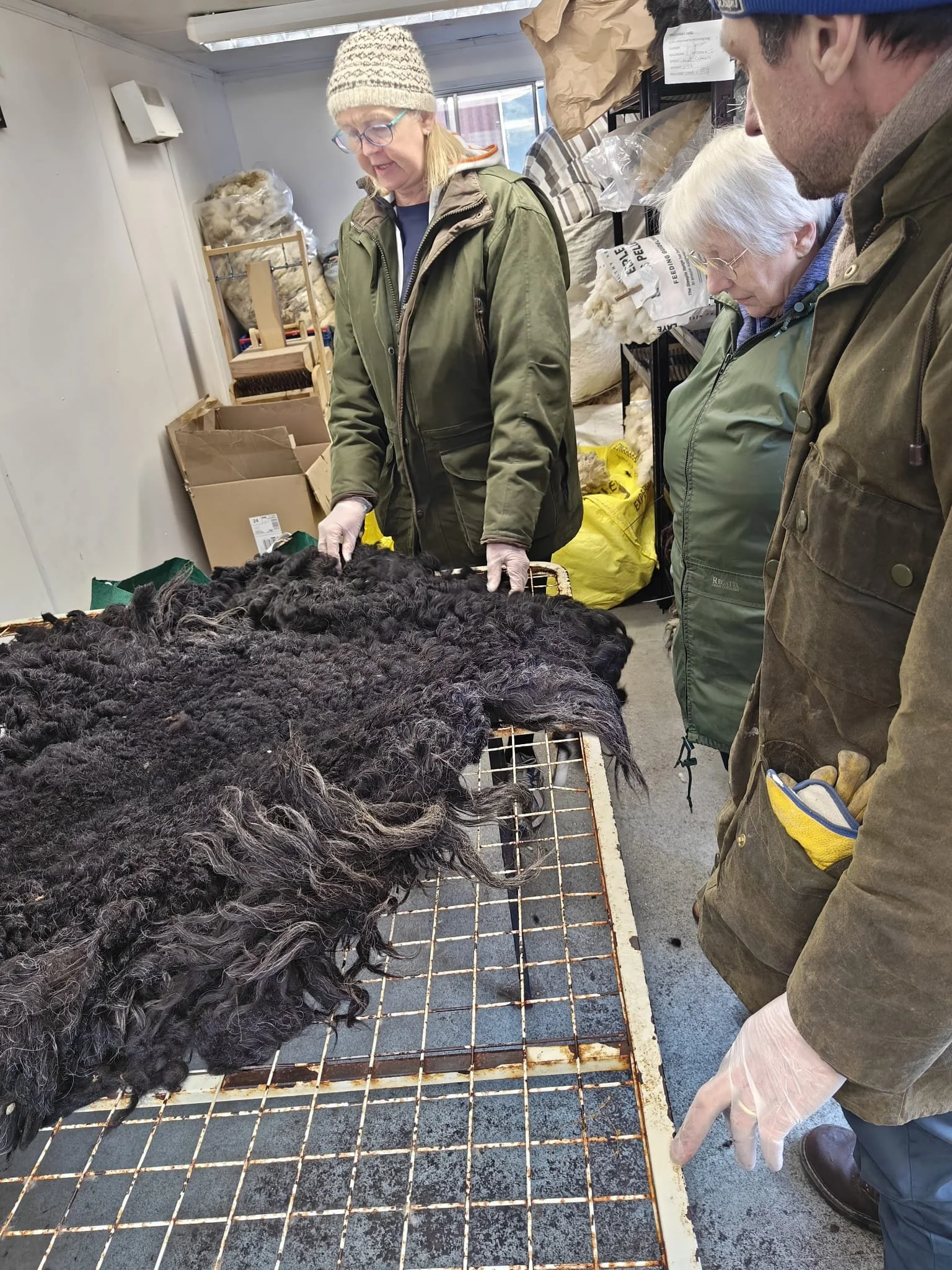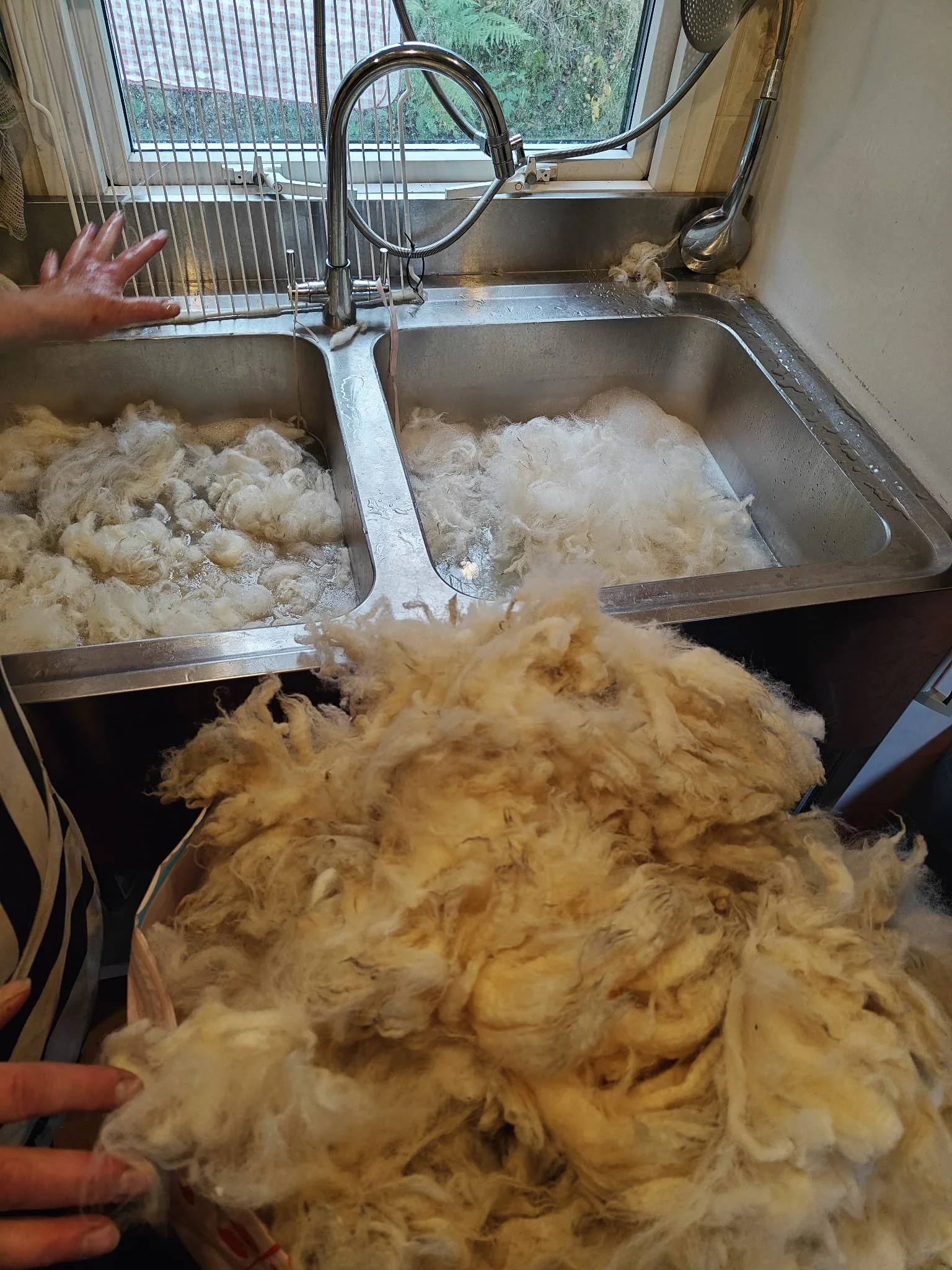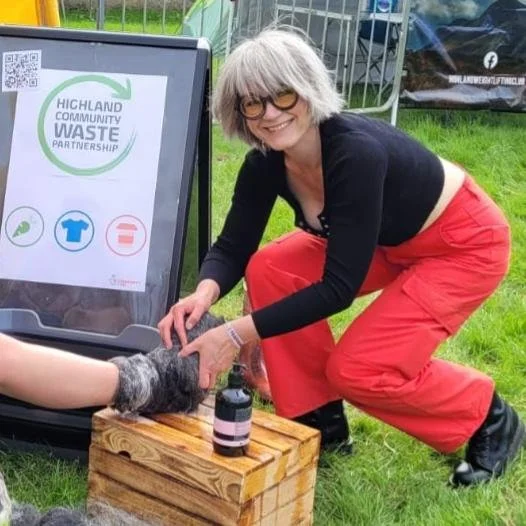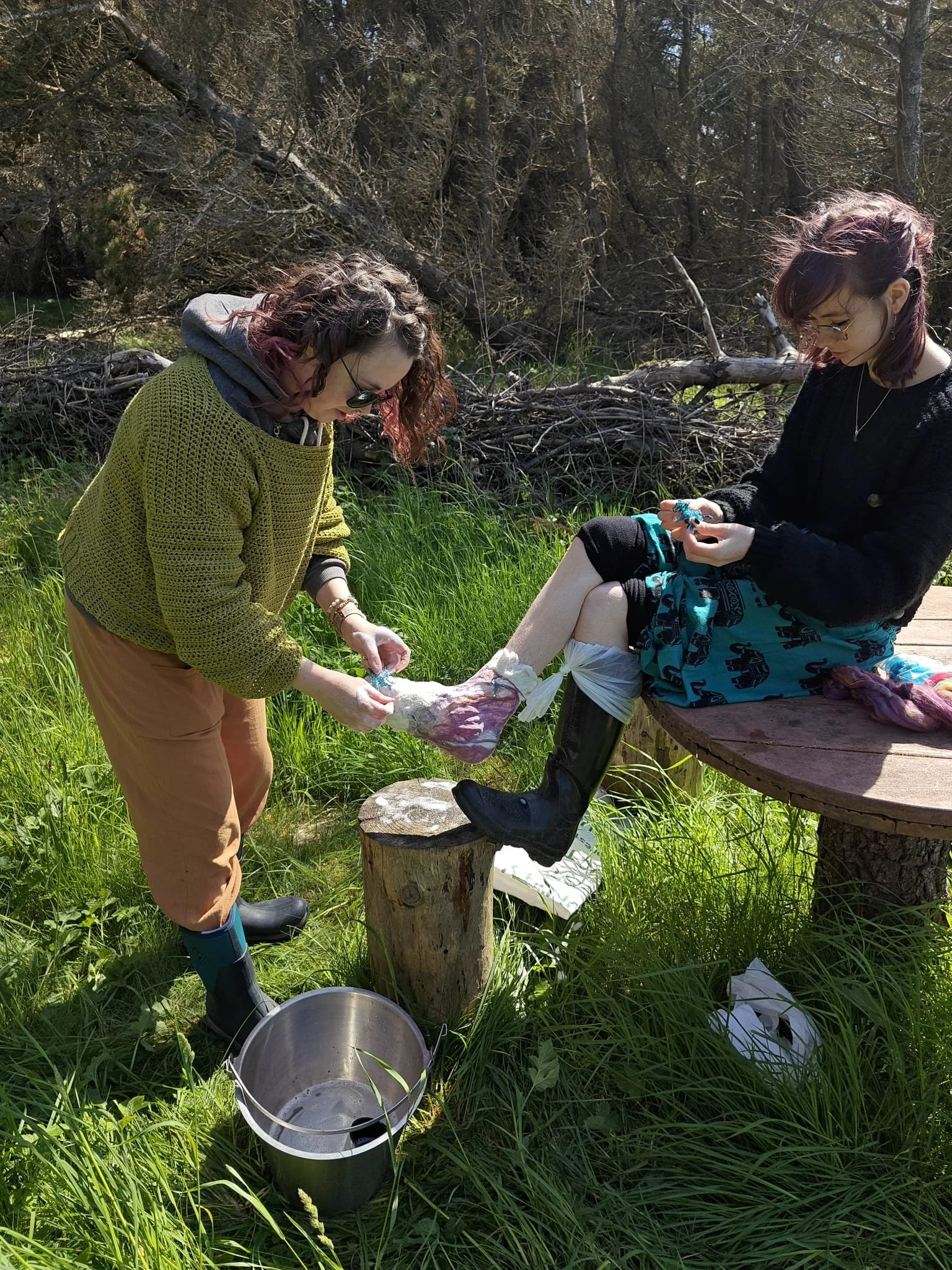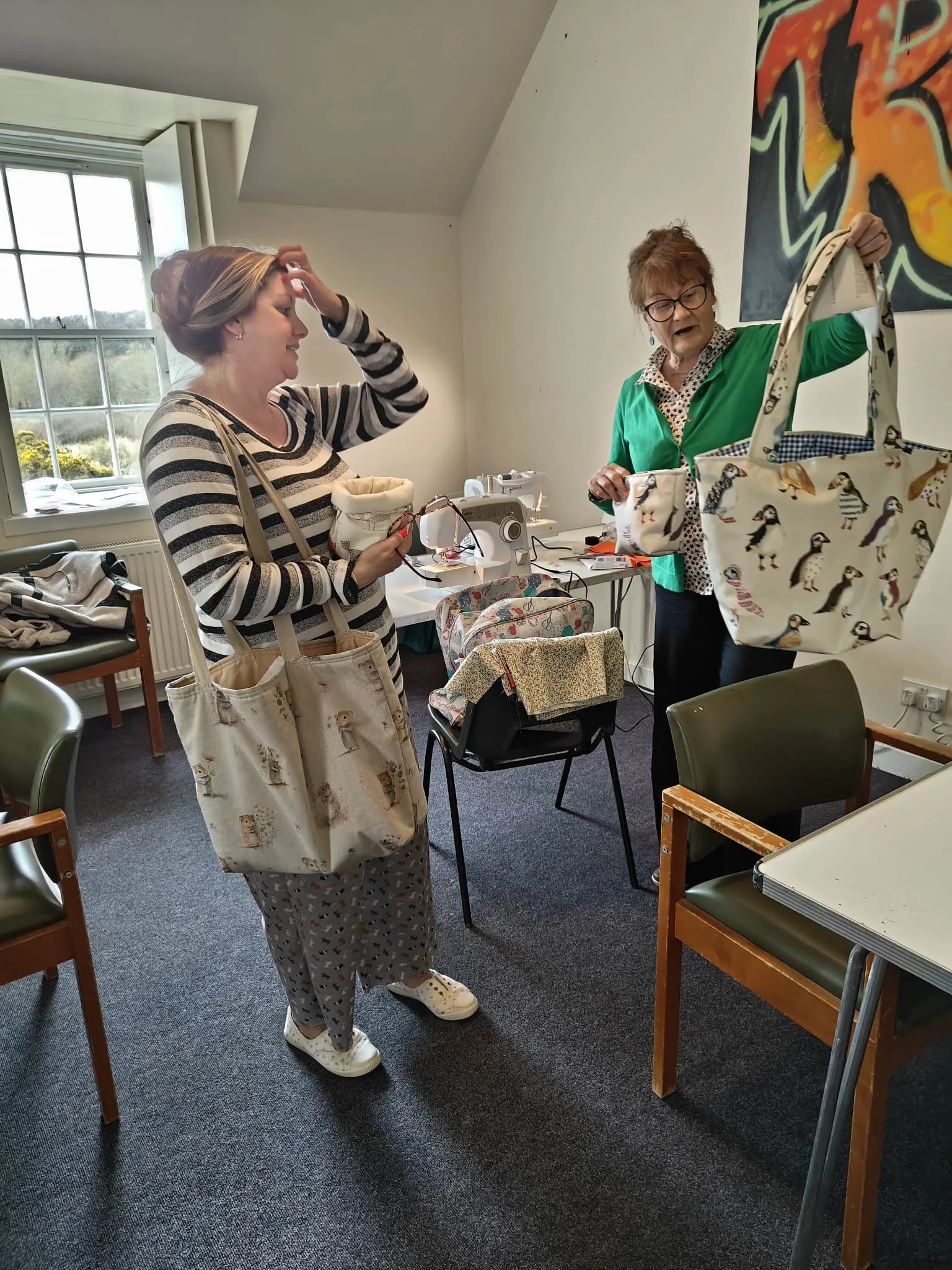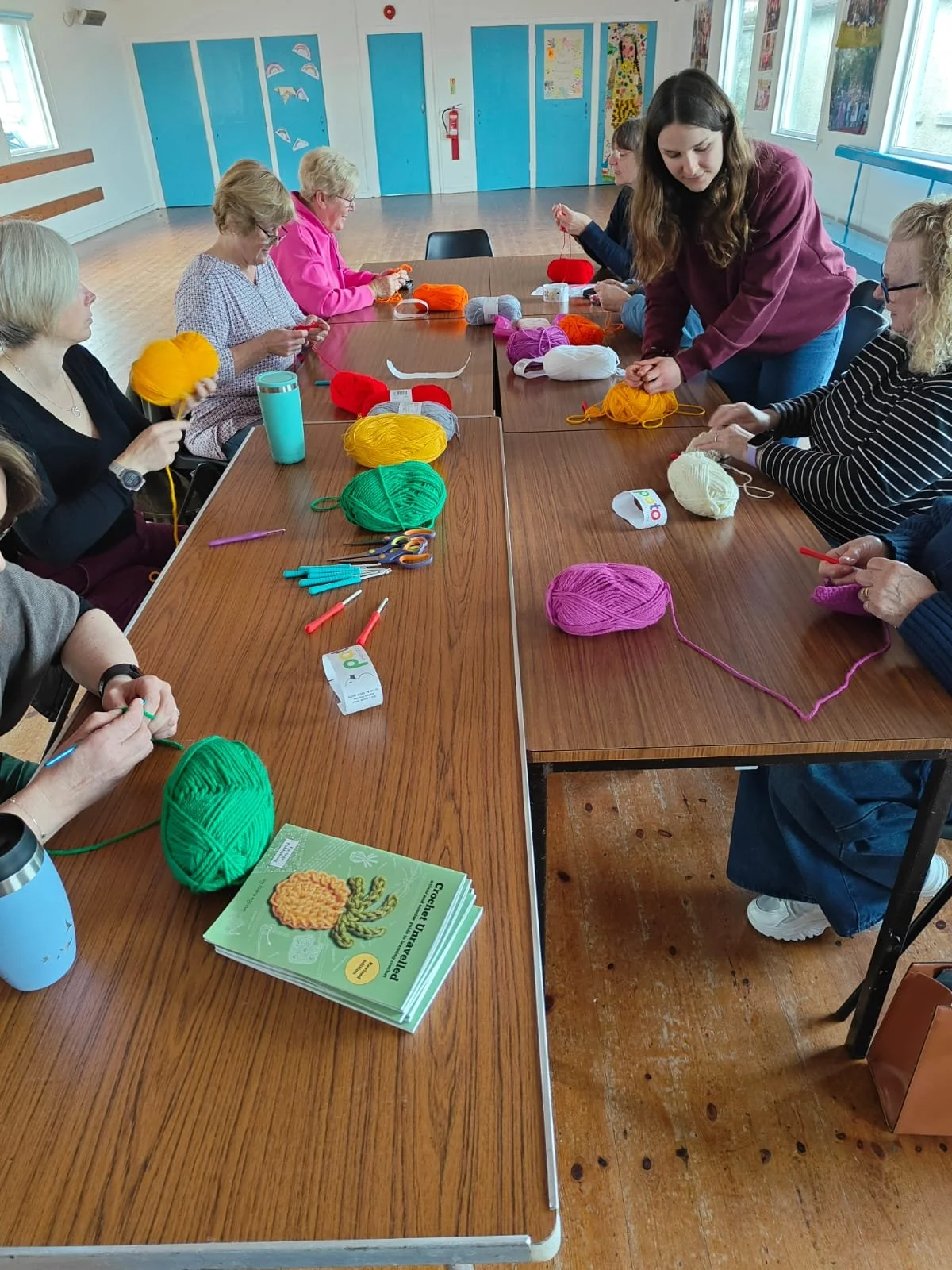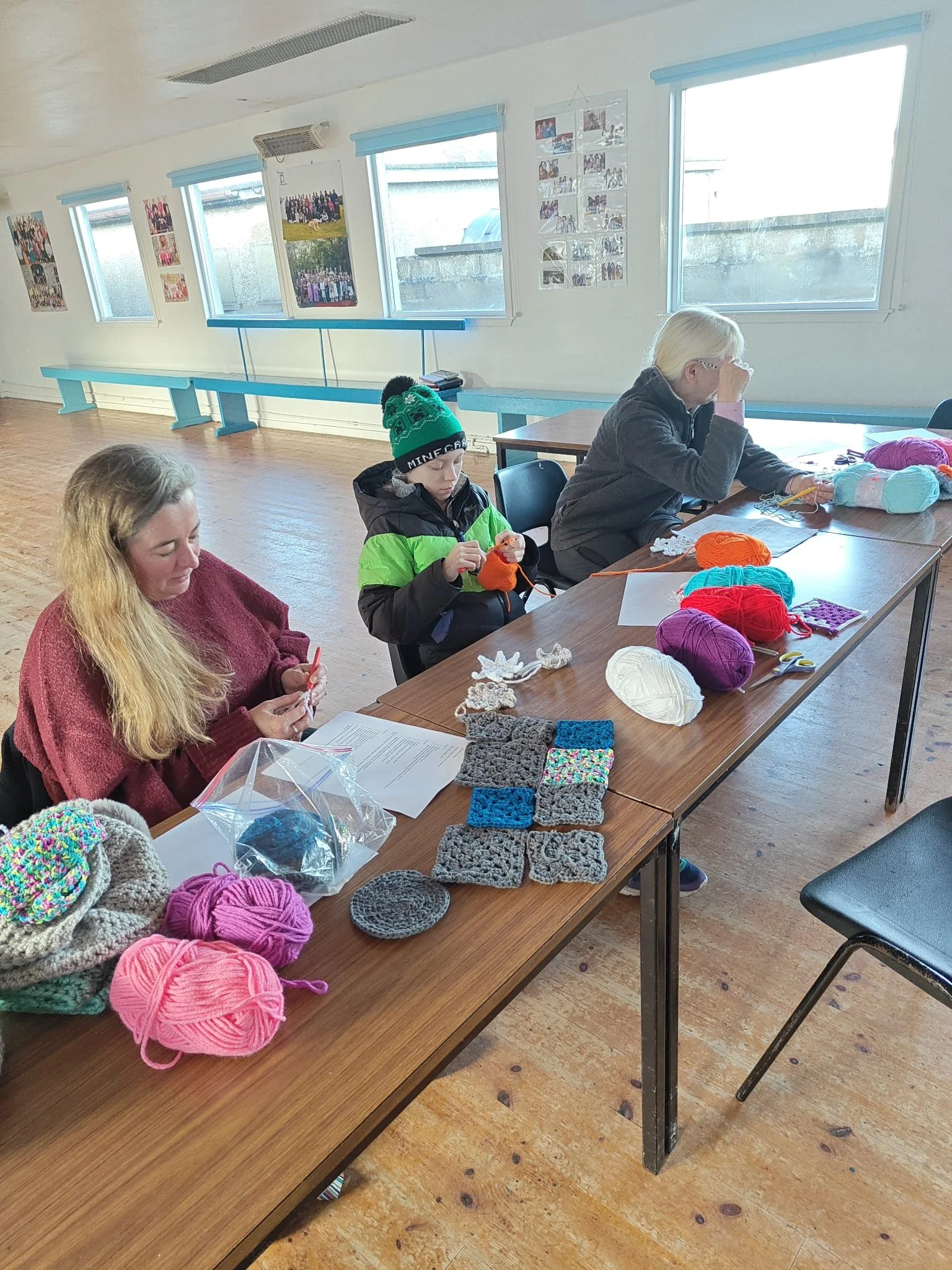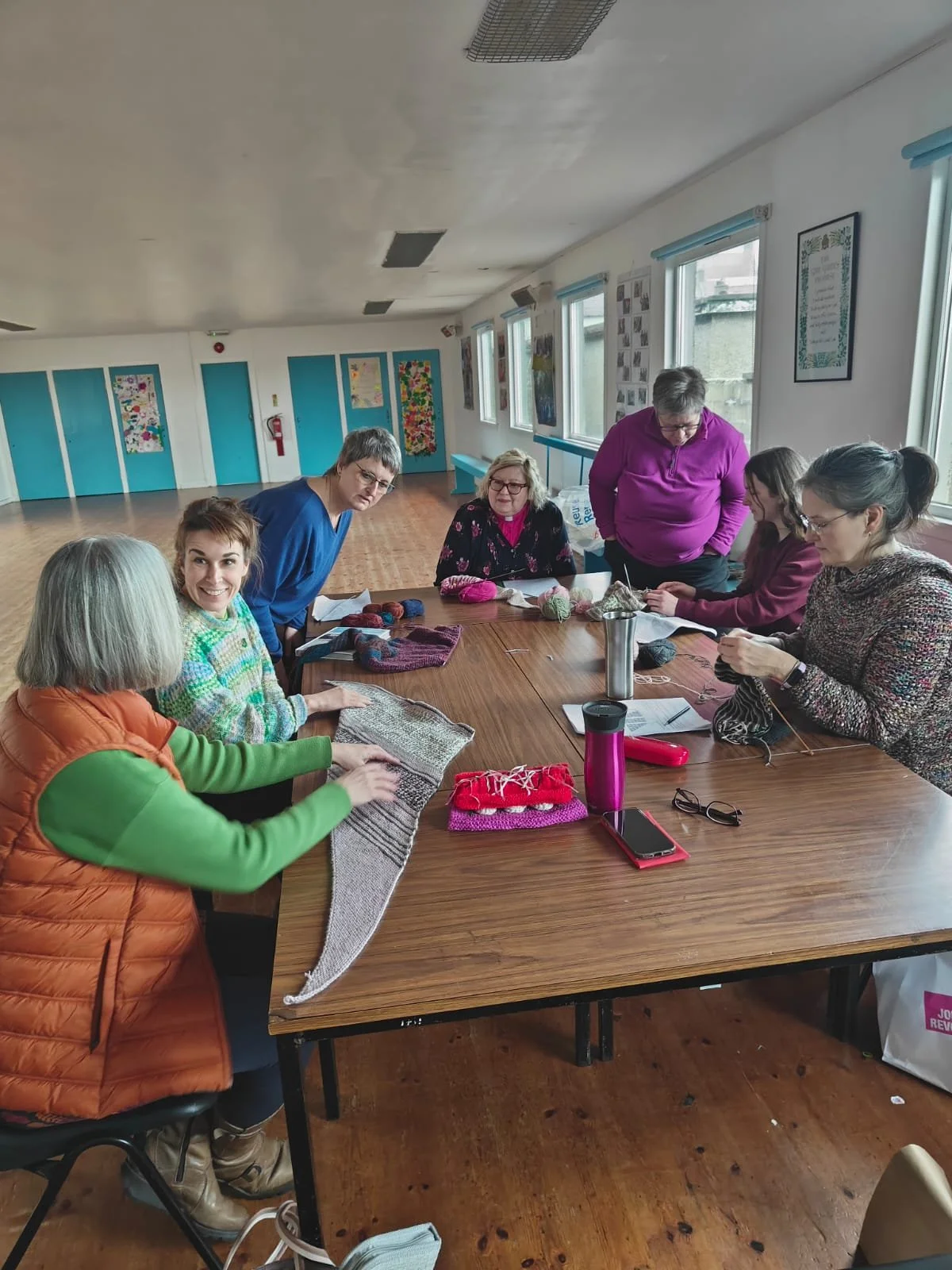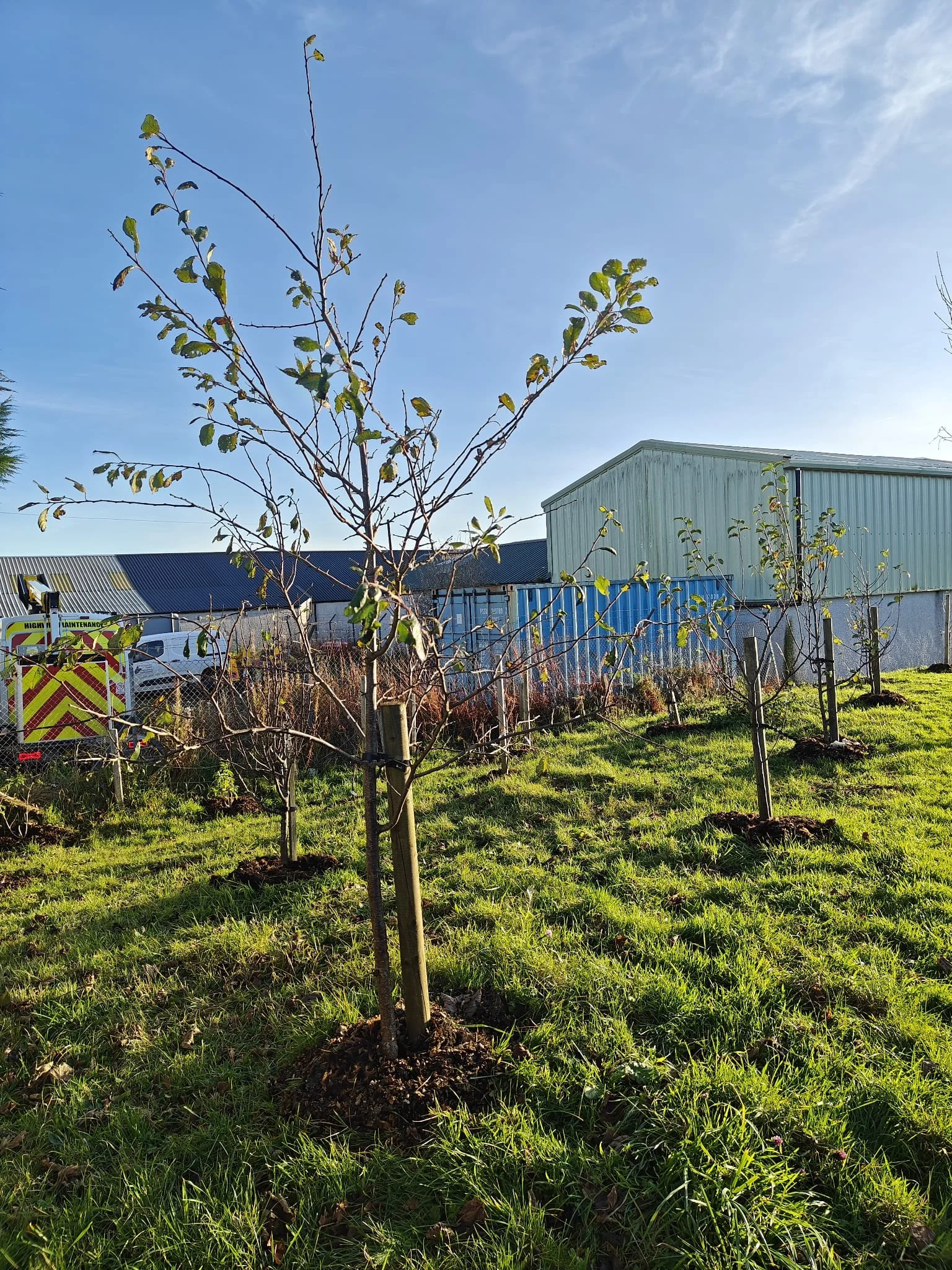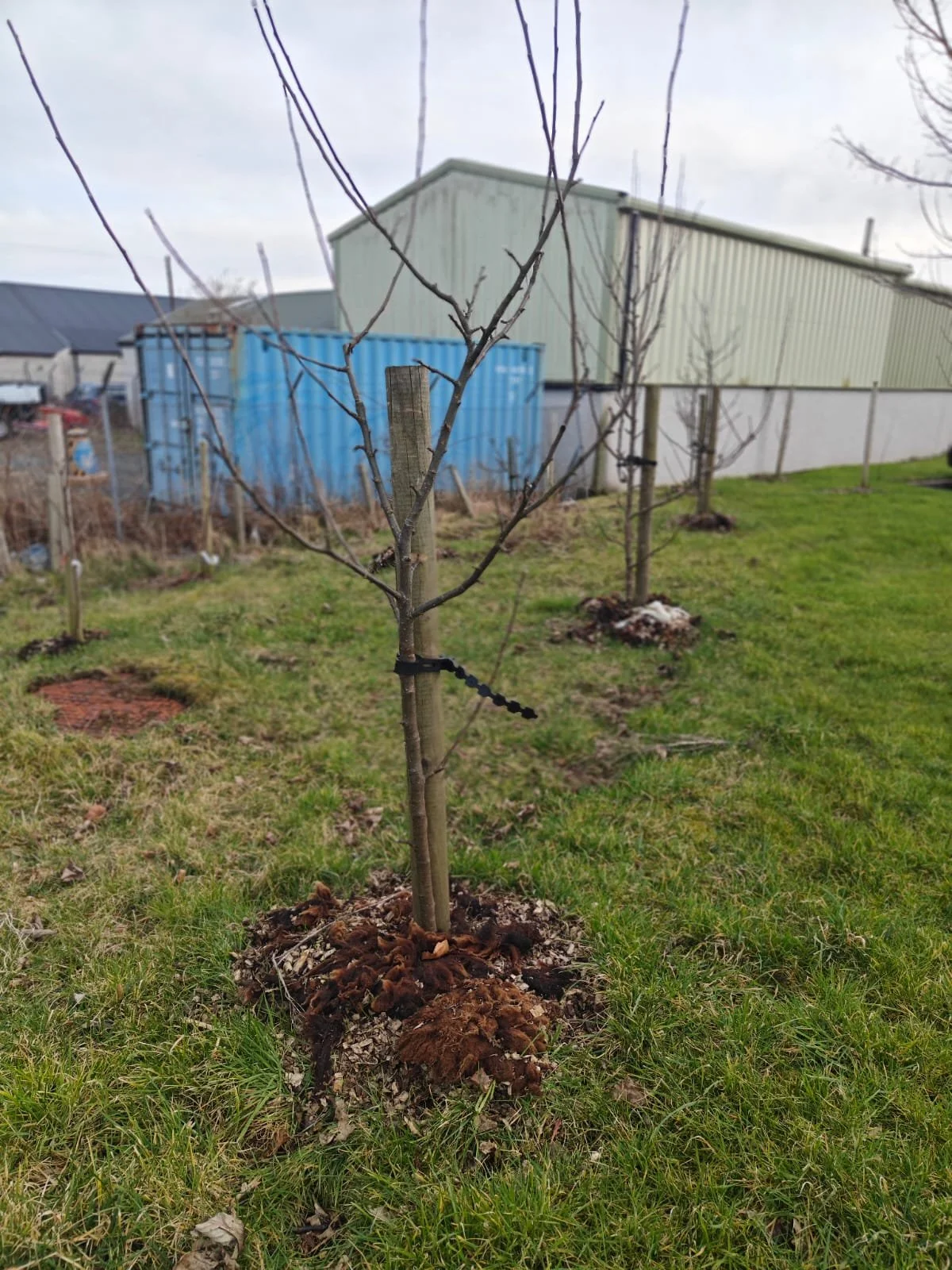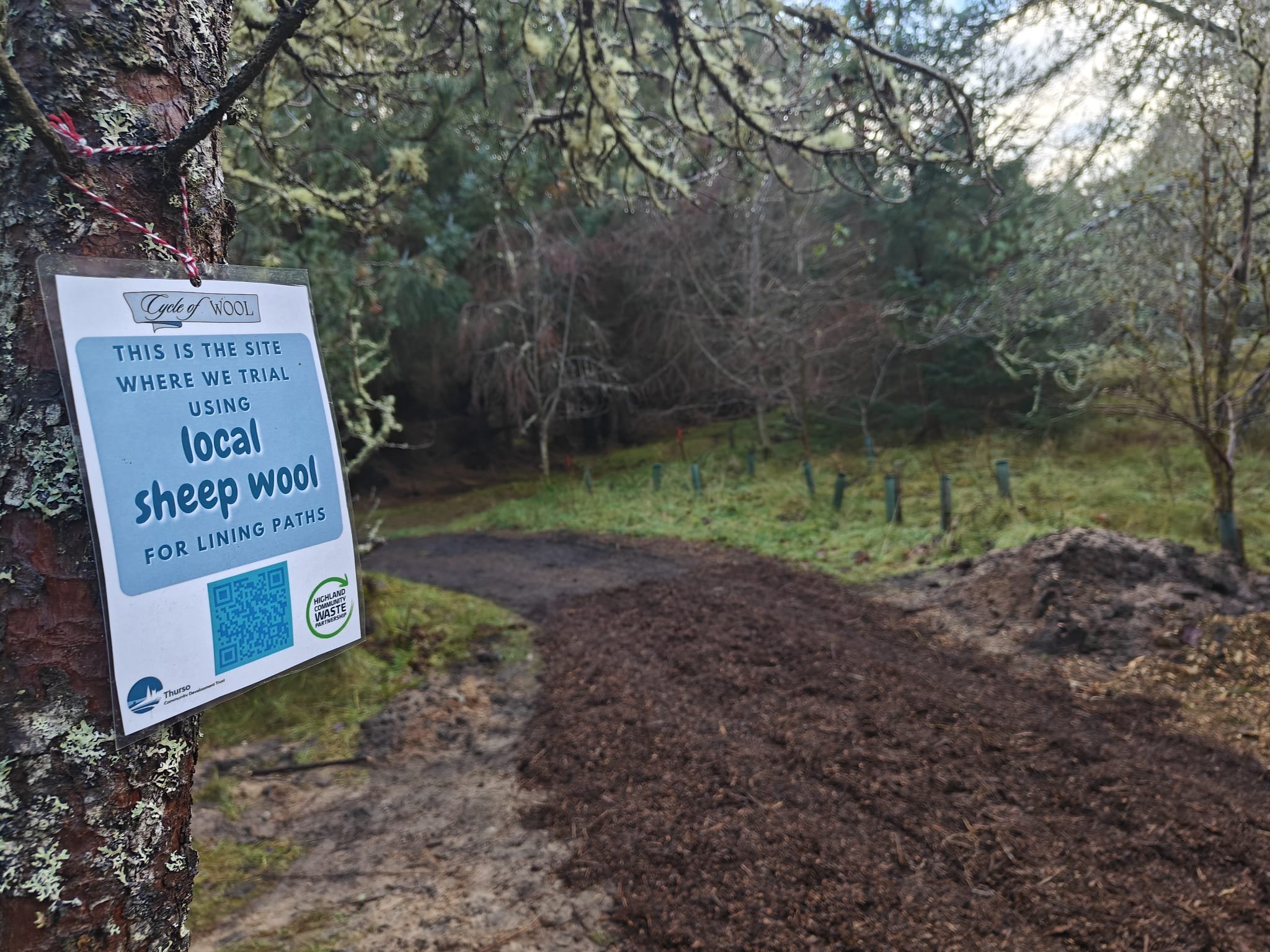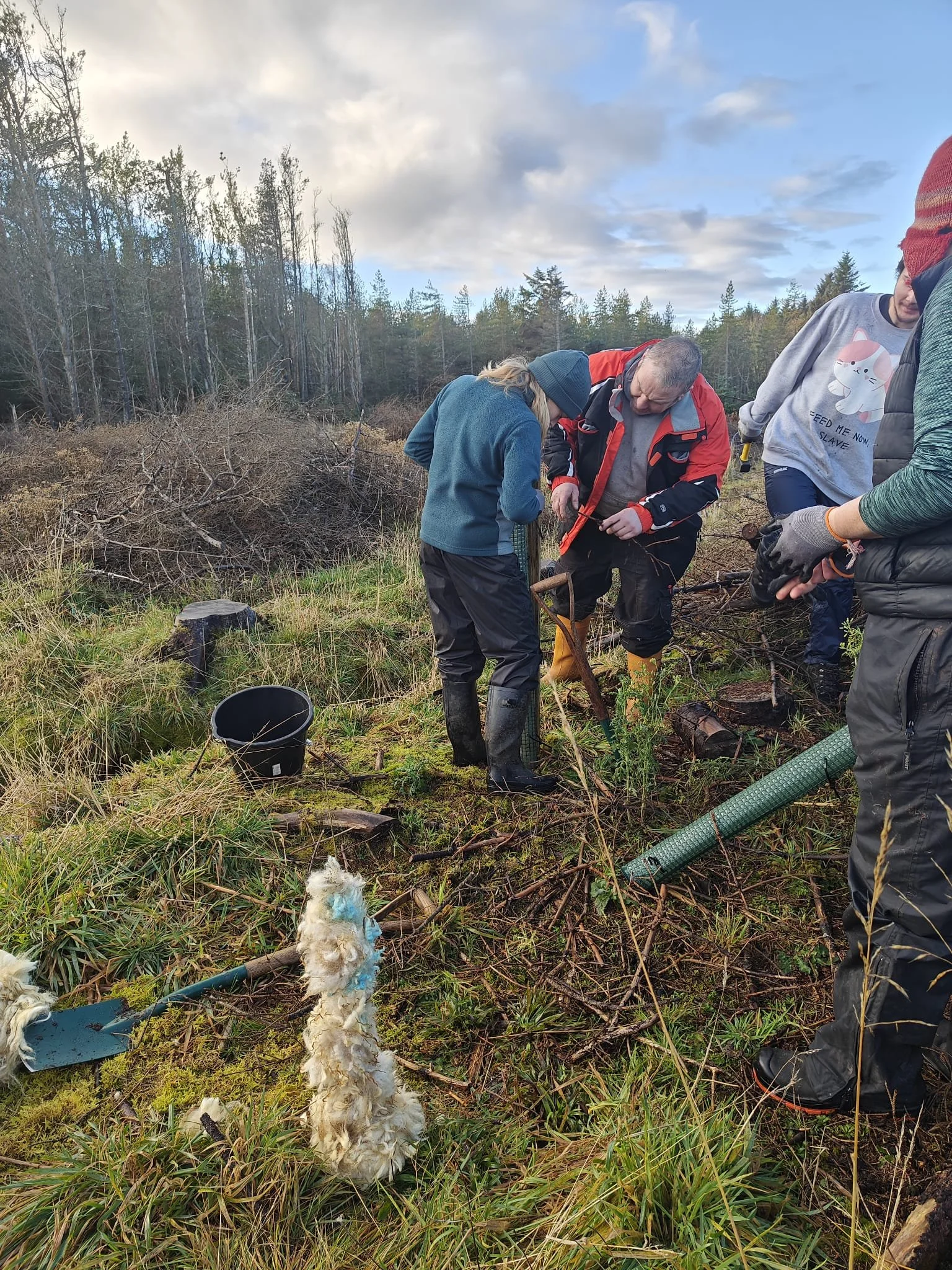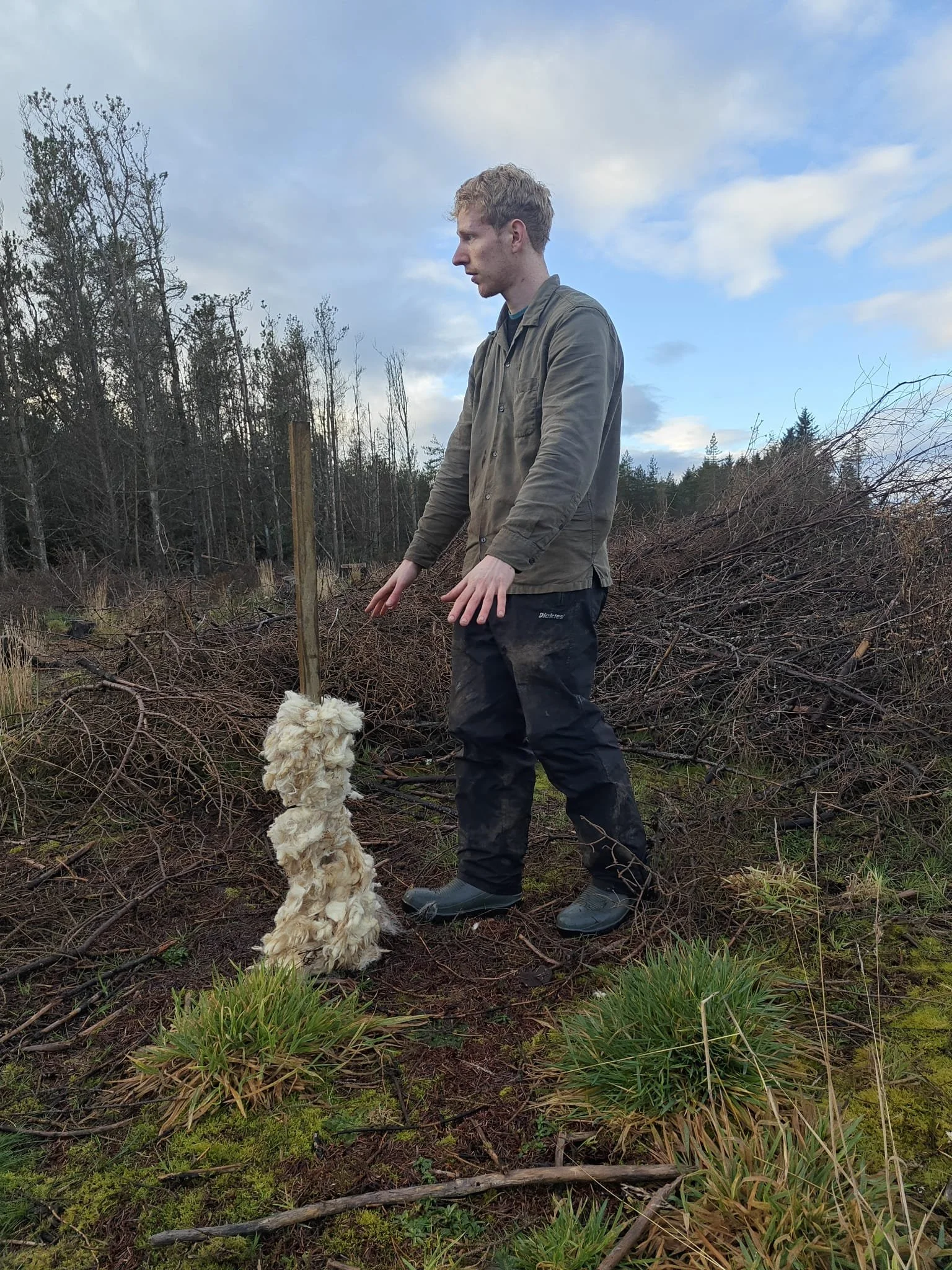Up here in the Far North, humans are massively outnumbered by sheep. For approximately 25 thousand people residing in Caithness, we have almost 125 thousand sheep!
Our local farmers struggle to find use to all the wool that is being clipped every year, while selling fleeces to British Wool Marketing Board has become unprofitable and not even covering costs for shearing. As a result, this amazing natural resource, which has next to zero carbon footprint if used locally, sadly, often goes to waste.
We find it especially heartbreaking to watch local sheep wool wasted because this fantastic material indeed embodies the concept of circular economy (that is, where resources are local, reused and repurposed, where economy is de-centralized and concentrated in local communities) and it has unrivalled potential as a 100% biodegradable, renewable and sustainable resource.
We are so grateful that being part of the HCWP enabled us to accomplish a lot of work to demonstrate to our community that sheep wool can find application in many spheres of our life, both in domestic and commercial use.
Our aim was to celebrate and reignite the popularity of heritage crafts of the Highlands around the sheep wool, on a cottage industry level. That is why we created the Cycle of Wool - series of workshops designed to provide a complete set of skills necessary to create products from sheep wool, from field to skin. We also carried out work to demonstrate how sheep fleece of any grade finds its application, and the wool not suitable for crafting is just perfect for use in garden and house improvement projects.
The mission of The Cycle of Wool is to attract more interest to sheep wool industry in the Highlands and to work towards decentralizing natural fibre production and dye processes to strengthen our local economic opportunities, create more jobs and improve mental well-being of the members of our community by offering training in slow crafting.
Here in Caithness, we are blessed to have incredibly talented and creative crafters and artists as a part of our community. We invited a few of them as instructors for our Cycle of Wool workshops, so that they could share that wealth of knowledge and skill they possess, hoping that local community would take on this initiative and develop it into a trend.
Cycle of Wool workshops were built in a logical order aligned with the sequence of processing sheep wool, so that attending all of them would provide an individual with the set of skills and knowledge enough for transforming raw sheep fleece into a ready product. However, every session was a separate event where attendants were provided with all required information and materials.
The aim of the Cycle of Wool was not only to teach the skills but also to demonstrate that all processes around turning sheep fleece into a complete product are comparatively easy and not daunting. We wanted to show that anyone can master them at the beginner level and give confidence to people for exploring further independently. At every workshop or course, we made sure to signpost our students to further in-depth learning or local crafting groups they could join.
The first in the logical sequence was the Fleece Cleaning and Prepping workshop. For this event, we collaborated with Highland Wool CIC, located at Hirsel Farm in Ardgay. Our participants had a chance to get the learning on how to skirt, grade, clean, wash, dry, fluff and card the sheep wool. We had a chance, where safe, to lay our hands on the equipment that Highland Wool use for processing wool, and found out about their innovative work on creating water filtering system for reusing the water to wash the wool.
You can read full report on Fleece Cleaning and Prepping Workshop here.
Then, we went for a Foraging Walk, in search of natural dyes for fibres, led by our local foraging expert Amanda Greig Williamson from Natures Path Natural Ways. During that walk we found out that almost everything in nature that is pigmented can work as a dye. The difference lies in the intensity of the resulting colour and complexity of dyeing process.
We learnt that common plants like nettles, cleavers, cow parsley or docks can be used for dyeing your fabrics, and also as food, spice or medicine, and are abundant and valuable resource that many of us are unaware of.
Full report on the Natural Dye Foraging Walk is available here.
'Store cupboard staple dyeing and a bit of colour fun' – this is how our amazing instructor Garance Warburton defined the next Cycle of Wool workshop where we discovered how to dye fabric using natural dyes.
We experimented with natural and easily accessible dyes, that most of us can find at our cupboards or forage for in our local area. Apart from the foraged plants that we used for printing on fabric, we also worked with turmeric powder, coffee grounds, onion shells and black beans - thus, almost 50% of our dyes were basically the repurposed food waste. With black beans, we used sustainable method of cold soaking, when the beans were soaked in water for a couple of weeks, and then our fabric samples were placed into the resulting solution for a few hours.
We found out how same dyes work on various types of fibres and saw with our own eyes how results varied from fibre to fibre, from mordant to mordant. It felt like a sneaky peak to alchemist’s workshop! Most impressive and unexpected were the results from black bean dye, where we achieved most stunning shades of magenta, blue and grey!
Find out everything about this Wool Dyeing Workshop Using Natural Dyes here.
Once wool is processed and carded (and dyed if desired) it can be used for the most ancient method of using the sheep wool known to mankind – wet felting. We delivered a number of workshops where we made wet felted slippers. Can you imagine that, just by wrapping the wool around your feet, putting wellies on, pouring warm soapy water inside (to trigger felting process) and going for a walk, you can make a pair of wonderful slippers/welly socks! It is so simple and fun that even a child can do it – and it is a fantastic way of utilizing the wool! Great advantage of wet felted product is its repairability – any hole or damage can be mended by adding more wool fibres, and slippers will look as new!
Further along the Cycle of Wool, the members of Caithness and Far North Spinning Group taught us how to spin wool. Spinning is like gym for your brain and nervous system! It trains your coordination and concentration: your feet and hands must move in different patterns and with different speed. You must be in control of the wheel motion, its speed and direction, while concentrating on feeding wool and creating correct tension and thickness of thread. Like all slow crafts, spinning is highly therapeutic and is a wonderful occupation to improve mental wellbeing. And, of course, this is how you turn carded wool into yarn. We are delighted to mention that most of the wool used at the workshops came from the sheep that live just over the fence from our instructors and was prepped and carded by them – truly zero carbon footprint process!
Full report on The Wool Spinning Workshop is available here.
Once your wool is in the form of yarn, it can be turned into a final product by means of knitting, crocheting, weaving and sewing. And we delivered training courses in all of these techniques.
Do you know that, traditionally, weavers used to be male? We were delighted that we had a mixed team of instructors for our weaving training - great Thursonians, the spouses Terry and Sara-Jane Hardy. Our students received in-depth training on the process of weaving, and the sessions started with exciting history lesson and overview of the types of looms out there. After theory, our students proceeded to trying their own hand at weaving on various types of weaving looms. They had a chance to choose from a range of yarns (all locally sourced) and found out how to combine warp and weft.
Find out everything about Wool Weaving Workshop here.
Our comprehensive sewing, crocheting and knitting training courses were a tremendous success. Each of them consisted of several sessions (12-14 hours course durations) and were so overbooked that we had to open extra groups for some of them. Both children and adults could take part, and we loved to see how at times 3 generations of the family were coming together to our classes. During these courses, our students learnt not only how to make a brand new product but also how to alter, repair and repurpose their existing garments. They were equipped with the knowledge of how to read and adjust patterns. We couldn’t be happier to see how, after completion of the Sewing Course, our students took matters into their own hands and sought funding to carry on with their training on more advanced levels. As our Knitting Course drew to a close, most of our knitters joined local knitting club and now regularly attend their sessions to perfect their skills in the circle of like-minded individuals.
Zoe Nightingale, instructor in Crochet Course:
'Teaching crochet has been a lovely experience. I have deep appreciation for everyone who were interested and for those who invested their time to learn something new. Well done to all of you, for being determined and for using your potential to crocheting garments and items which is a worthwhile and wonderful skill to have.
Enjoy the rest of your crocheting!'
Overall, 105 people received training at the Cycle of Wool crafting workshops and courses.
Only around 30 to 50% of the sheep fleece has high enough quality to end up as a material for a crafting project, depending on the breed and other factors. However, this doesn’t mean that the rest of the fleece is useless – in fact, even the bits of fleeces contaminated with the sheep poo find perfect application, as they make an excellent slow fertilizer! We tried to put together as many ways of utilizing sheep wool as we discovered, in this article.
We also wanted to provide the evidence to our community that sheep wool is a great and versatile resource, because seeing is believing! Therefore, we teamed up with local community-run green spaces and set up experimental sites where we demonstrate in practice how raw sheep fleece can be used.
All the wool was kindly donated by our local farmers and crofters – thank you all so much for enabling us to perform this work!
Bed mulching at Thurso Grows Community Gardens
One of TCDT projects is Community Gardens. It is a lovely space where everyone is welcome, it’s a place for growing and sharing food, and also for garden therapy and mindfulness. There are several raised beds, and we trialed using the fleece as mulch for winter protection of the soil. We also mulched the tree circles in the young orchard. We laid the wool in November 2024, and our biggest concern was that the wool could be easily blown away – remember, we are in Caithness, the capital of the winds! We trialed several ways of laying out wool to see which would hold best, and we discovered that fleece did not require any additional help to stay on soil, it got felted very quickly under the influence of rains, and in March 2025, after multiple storms, our wool mulch is still in place!
Detailed report on using sheep wool at Thurso Grows is here.
November 2024
March 2025
November 2024
Path Lining and Sapling Protection at Dunnet Community Forest
Dunnet Forest can be quite wet and muddy during winter months, and local development officers and volunteers struggle to keep the paths walkable using the woodchip – material that they produce themselves and have in abundance. Woodchip eventually sinks in the mud, so the process has to be repeated again and again. We selected a segment on a popular path that is particularly prone to getting wet over the rainy season and experimented with it. We dug up a shallow trench – about 15 cm deep, and placed wooden formwork around the edges. Then we filled the trench with sheep fleece of lowest grade, compacted the wool and then backfilled the segment with the woodchip. After 4 months of the winter 2024-2025, the results are amazing – this stretch of the path remained dry and undamaged, despite bad storms, lots of precipitation, footfall and Dunnet Forrest buggies that constantly ride along that path. For comparison, similar stretches of the path that weren’t lined with the wool, got muddy very quickly. Dunnet Community Forest are now planning to eventually upgrade all their paths in the same manner.
Another project that we carried out at Dunnet Forest was protecting the oak saplings that were planted in autumn 2024. We wrapped them in fleeces like in cozy scarves, to protect against the bitter winds, and also deter the deer and rabbits. In late March 2025 we can observe that all protected saplings survived the winter, judging by their swollen buds ready to open.
March 2025
All details about our work at Dunnet Community Forest in this report here.
Trial use of sheep fleeces for path building at our local RSPB site in Forsinard Flows is scheduled for autumn 2025.
We also hope that large amounts of local fleece will be used in Warmlie, our local district heating project currently under development, for residential insulation.
Overall, we used around 200 fleeces for our gardening projects, that otherwise would be sent to landfill. We hope that by demonstrating amazing potential that sheep wool has in so many spheres of life, the impact of our work will result in positive shifts in the sheep wool industry in Thurso area and Far North.
Following these links, you can access more in-depth information on our work done around the Cycle of Wool.
The Highland Community Waste Partnership ran between April 2022 – March 2025. Funded by the National Lottery Climate Action Fund and coordinated by Keep Scotland Beautiful, this project brough together eight community groups in the Highlands to reduce waste and promote more sustainable consumption. To learn more about the project visit: www.keepscotlandbeautiful.org/highlandcommunitywaste




